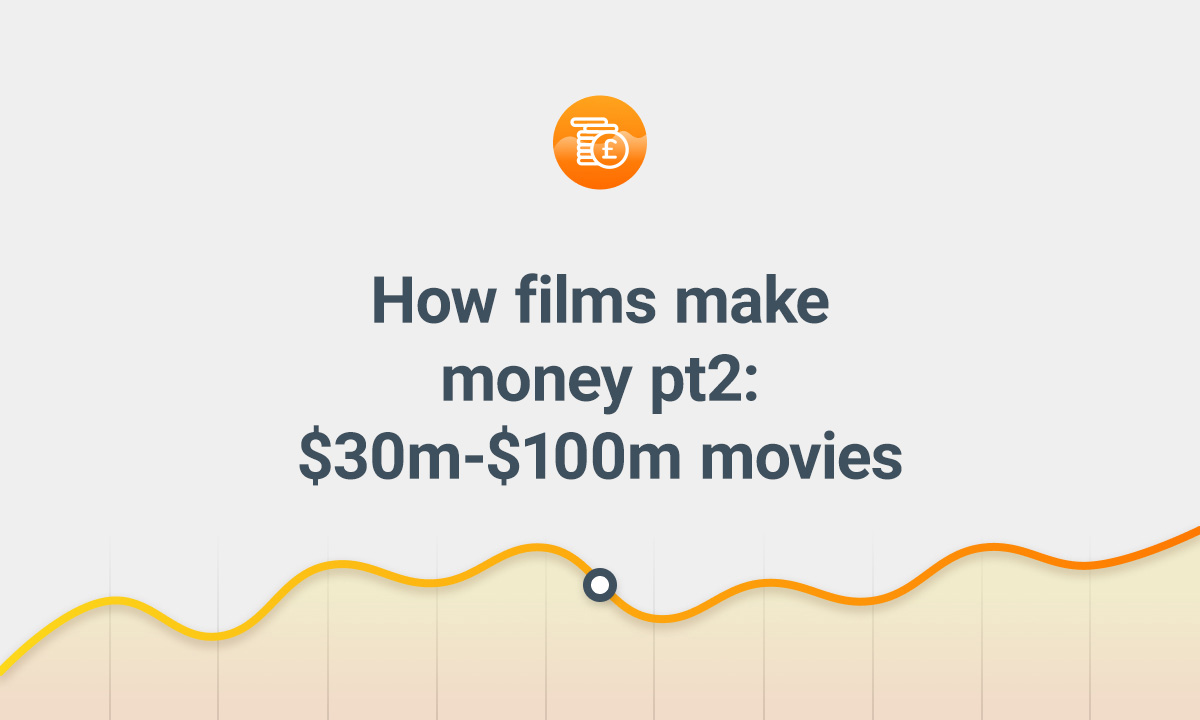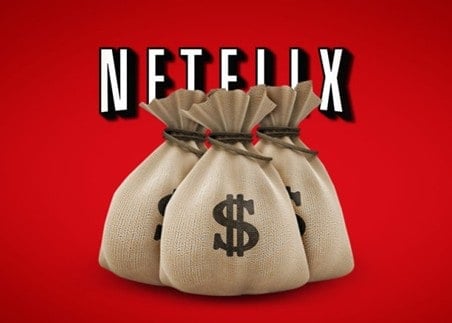The Business Model Behind Netflix Original Films
Netflix Original Films are a crucial component of the company’s content strategy, providing a unique opportunity for creative control and potential franchise development. The financial structure of Netflix Original Films is designed to optimize production costs, marketing expenses, and revenue sharing models.
Production costs for Netflix Original Films can vary greatly, depending on the scope and scale of the project. On average, Netflix spends between $20 million to $100 million per film, although some productions can exceed $200 million. Marketing expenses are also a significant component of the financial structure, with Netflix allocating a substantial budget to promote its original films.
Revenue sharing models are another key aspect of Netflix Original Films. The company typically retains ownership of the content and distributes it exclusively on its platform. This approach enables Netflix to maintain creative control and generate revenue through subscription fees. In some cases, Netflix may also enter into revenue sharing agreements with producers or studios, providing a percentage of the revenue generated by the film.
The benefits of producing original content are numerous. Netflix gains creative control, allowing the company to develop unique and engaging storylines that resonate with its audience. Original content also provides opportunities for franchise development, enabling Netflix to create a library of content that can be leveraged across multiple platforms.
Furthermore, Netflix Original Films can generate significant revenue through subscription fees. By producing high-quality, engaging content, Netflix can attract and retain subscribers, driving revenue growth and increasing the company’s market share. The success of Netflix Original Films has also enabled the company to expand its content offerings, including documentaries, comedy specials, and children’s programming.
Overall, the business model behind Netflix Original Films is designed to optimize production costs, marketing expenses, and revenue sharing models. By producing high-quality, engaging content, Netflix can maintain creative control, generate revenue, and drive growth in the competitive streaming industry.
How Netflix Measures Film Performance and Success
Netflix uses a variety of metrics to evaluate film performance and success, including viewership numbers, engagement metrics, and audience retention. These metrics provide valuable insights into how films are performing on the platform and inform content acquisition and production decisions.
Viewership numbers are a key metric for Netflix, as they indicate the popularity of a film and its potential for generating revenue. Netflix tracks viewership numbers in real-time, allowing the company to quickly identify which films are performing well and which ones need improvement.
Engagement metrics, such as watch time and completion rates, also play a crucial role in evaluating film performance. These metrics help Netflix understand how engaged viewers are with a film and whether they are likely to recommend it to others.
Audience retention is another important metric for Netflix, as it indicates how well a film holds viewers’ attention throughout. Netflix uses audience retention data to identify areas where a film may be losing viewers and make adjustments to improve its overall performance.
Netflix also uses data analytics to track the performance of its films across different demographics and regions. This data helps the company identify trends and patterns in viewer behavior and make informed decisions about which films to produce and acquire.
The metrics Netflix uses to evaluate film performance are closely tied to its content acquisition and production decisions. By analyzing viewership numbers, engagement metrics, and audience retention, Netflix can identify which types of films are performing well and adjust its content strategy accordingly.
For example, if Netflix notices that a particular genre of film is performing well, it may decide to produce more content in that genre. Similarly, if a film is struggling to retain viewers, Netflix may decide to adjust its marketing strategy or make changes to the film itself.
Overall, Netflix’s use of metrics to evaluate film performance and success is a key factor in its ability to provide high-quality content to its subscribers. By leveraging data analytics and metrics, Netflix can make informed decisions about its content strategy and drive growth in the competitive streaming industry.
The Role of Data Analytics in Netflix Film Monetization
Data analytics plays a crucial role in Netflix’s film monetization strategy, enabling the company to optimize its content offerings and maximize revenue. By leveraging data analytics, Netflix can gain valuable insights into viewer behavior, preferences, and engagement patterns, which inform content acquisition and production decisions.
One of the key ways Netflix uses data analytics is through personalized recommendations. By analyzing viewer behavior and preferences, Netflix can recommend films that are likely to resonate with individual viewers, increasing engagement and reducing churn. This approach also enables Netflix to promote its original content, such as films and TV shows, to targeted audiences, increasing the likelihood of success.
Content promotion is another area where data analytics is critical for Netflix. By analyzing viewer engagement patterns and preferences, Netflix can identify the most effective promotional strategies for its films, including trailers, social media campaigns, and influencer partnerships. This approach enables Netflix to maximize the visibility and appeal of its films, driving viewership and revenue.
Pricing strategies are also informed by data analytics at Netflix. By analyzing viewer behavior and preferences, Netflix can determine the optimal pricing for its films, balancing revenue goals with viewer demand. This approach enables Netflix to maximize revenue while maintaining a competitive pricing strategy.
The importance of data-driven decision making in the streaming industry cannot be overstated. By leveraging data analytics, Netflix can gain a competitive edge in the market, optimizing its content offerings and maximizing revenue. As the streaming industry continues to evolve, the role of data analytics will only become more critical, enabling companies like Netflix to stay ahead of the curve and drive growth.
In the context of how films make money on Netflix, data analytics is a critical component of the company’s monetization strategy. By leveraging data analytics, Netflix can optimize its content offerings, promote its films effectively, and determine optimal pricing strategies, driving revenue and growth in the competitive streaming industry.
Revenue Streams for Films on Netflix: A Deep Dive
Netflix generates revenue from its films through a variety of streams, including subscription fees, advertising revenue, and merchandising opportunities. Understanding these revenue streams is crucial to grasping how films make money on Netflix.
Subscription fees are the primary source of revenue for Netflix. The company charges its subscribers a monthly fee to access its library of content, including films. The subscription fee model provides Netflix with a predictable and recurring revenue stream, enabling the company to invest in new content and expand its operations.
Advertising revenue is another significant revenue stream for Netflix. Although the company does not display traditional ads on its platform, it does offer branded content and product placement opportunities to advertisers. This approach enables Netflix to generate revenue from its films while maintaining a ad-free viewing experience for its subscribers.
Merchandising opportunities are also an important revenue stream for Netflix. The company licenses its intellectual property, including characters and logos, to third-party manufacturers, who produce and sell merchandise related to Netflix’s films. This approach enables Netflix to generate revenue from its films while expanding its brand reach and awareness.
In addition to these revenue streams, Netflix also generates revenue from its films through licensing agreements with other companies. For example, Netflix may license its films to airlines, hotels, and other companies that offer streaming services to their customers. This approach enables Netflix to generate revenue from its films while expanding its reach and distribution.
Understanding the revenue streams for films on Netflix is essential to grasping how the company generates revenue from its content. By leveraging multiple revenue streams, Netflix is able to maximize its revenue potential and invest in new content and initiatives.
In the context of how films make money on Netflix, it’s clear that the company’s revenue streams are diverse and multifaceted. By generating revenue from subscription fees, advertising, merchandising, and licensing agreements, Netflix is able to create a sustainable and profitable business model that supports its growth and expansion.
Case Study: How a Successful Netflix Film Can Generate Millions
To understand how films make money on Netflix, let’s take a closer look at a successful Netflix Original Film, “The Irishman.” Directed by Martin Scorsese and starring Robert De Niro, Al Pacino, and Joe Pesci, “The Irishman” was a critical and commercial success, generating millions of dollars in revenue for Netflix.
Production costs for “The Irishman” were estimated to be around $159 million, making it one of the most expensive Netflix Original Films to date. However, the film’s success was not limited to its production costs. “The Irishman” was also a major marketing success, with Netflix investing heavily in promoting the film through social media, online advertising, and publicity campaigns.
According to reports, “The Irishman” generated an estimated $200 million in revenue for Netflix, making it one of the most successful Netflix Original Films of all time. The film’s success can be attributed to a combination of factors, including its critical acclaim, strong word-of-mouth, and effective marketing campaign.
One of the key factors that contributed to the success of “The Irishman” was its ability to attract a large and engaged audience. The film’s viewership numbers were impressive, with millions of viewers tuning in to watch the film in its first week of release. The film’s engagement metrics were also strong, with viewers watching an average of 75% of the film’s runtime.
The success of “The Irishman” demonstrates the potential for Netflix Original Films to generate millions of dollars in revenue. By investing in high-quality content, effective marketing campaigns, and strategic distribution, Netflix can create successful films that attract large and engaged audiences.
In the context of how films make money on Netflix, the success of “The Irishman” highlights the importance of creating high-quality content that resonates with audiences. By investing in talented filmmakers, writers, and actors, Netflix can create films that generate significant revenue and contribute to the company’s overall profitability.
Challenges and Opportunities in the Netflix Film Monetization Landscape
Netflix faces several challenges in the film monetization space, including increasing competition, content saturation, and evolving consumer behavior. Despite these challenges, there are opportunities for growth and innovation in the Netflix film business.
One of the main challenges facing Netflix is increasing competition from other streaming services, such as Amazon Prime Video, Hulu, and Disney+. These services are investing heavily in original content, which is attracting viewers away from Netflix. Additionally, the rise of ad-supported streaming services, such as Tubi and Pluto TV, is providing viewers with more options for free or low-cost streaming.
Content saturation is another challenge facing Netflix. With so many streaming services available, viewers are experiencing fatigue from the sheer amount of content available. This is making it harder for Netflix to stand out and attract viewers to its platform.
Evolving consumer behavior is also a challenge for Netflix. Viewers are increasingly expecting more personalized and interactive experiences from their streaming services. Netflix needs to adapt to these changing expectations in order to remain competitive.
Despite these challenges, there are opportunities for growth and innovation in the Netflix film business. One opportunity is the rise of international markets. Netflix has been expanding its reach into new markets, such as India and Africa, which are providing new revenue streams for the company.
Another opportunity is the growth of niche content. Netflix has been investing in niche content, such as documentaries and foreign language films, which are attracting new viewers to the platform.
Finally, the rise of virtual reality (VR) and augmented reality (AR) is providing new opportunities for Netflix to innovate and differentiate itself from other streaming services. Netflix has been experimenting with VR and AR content, which is providing new ways for viewers to experience films and TV shows.
In the context of how films make money on Netflix, the challenges and opportunities facing the company highlight the need for innovation and adaptation in the streaming industry. By investing in new technologies, such as VR and AR, and expanding into new markets, Netflix can continue to grow and remain competitive in the film monetization space.
Conclusion: The Future of Film Monetization on Netflix
The future of film monetization on Netflix is likely to be shaped by several trends and developments. One of the most significant trends is the increasing competition from other streaming services, such as Amazon Prime Video, Hulu, and Disney+. These services are investing heavily in original content, which is attracting viewers away from Netflix.
Another trend that is likely to impact the future of film monetization on Netflix is the rise of niche content. Netflix has been investing in niche content, such as documentaries and foreign language films, which are attracting new viewers to the platform.
The growth of virtual reality (VR) and augmented reality (AR) is also likely to impact the future of film monetization on Netflix. Netflix has been experimenting with VR and AR content, which is providing new ways for viewers to experience films and TV shows.
In addition to these trends, the future of film monetization on Netflix is also likely to be shaped by changes in consumer behavior. Viewers are increasingly expecting more personalized and interactive experiences from their streaming services, which is driving the development of new technologies and business models.
Overall, the future of film monetization on Netflix is likely to be shaped by a combination of technological, economic, and cultural factors. By understanding these trends and developments, Netflix can continue to innovate and adapt to changing consumer behavior, ensuring the long-term success of its film business.
In the context of how films make money on Netflix, the future of film monetization on the platform is likely to be shaped by a combination of factors, including competition, niche content, VR and AR, and changes in consumer behavior. By understanding these trends and developments, Netflix can continue to innovate and adapt to changing consumer behavior, ensuring the long-term success of its film business.
Conclusion: The Future of Film Monetization on Netflix
In conclusion, the future of film monetization on Netflix is likely to be shaped by a combination of technological, economic, and cultural factors. By understanding these trends and developments, Netflix can continue to innovate and adapt to changing consumer behavior, ensuring the long-term success of its film business.
One of the key takeaways from this article is the importance of data-driven decision making in the streaming industry. By leveraging data analytics, Netflix can optimize its film monetization strategies, including personalized recommendations, content promotion, and pricing strategies.
Another key takeaway is the potential for growth and innovation in the Netflix film business. By investing in new technologies, such as virtual reality and augmented reality, and expanding into new markets, Netflix can continue to attract new viewers and increase its revenue streams.
Finally, the future of film monetization on Netflix is likely to be shaped by changes in consumer behavior. Viewers are increasingly expecting more personalized and interactive experiences from their streaming services, which is driving the development of new technologies and business models.
In the context of how films make money on Netflix, the future of film monetization on the platform is likely to be shaped by a combination of factors, including competition, niche content, VR and AR, and changes in consumer behavior. By understanding these trends and developments, Netflix can continue to innovate and adapt to changing consumer behavior, ensuring the long-term success of its film business.
As the streaming industry continues to evolve, it will be interesting to see how Netflix and other streaming services adapt to changing consumer behavior and technological advancements. One thing is certain, however: the future of film monetization on Netflix is likely to be shaped by a combination of innovative technologies, creative business models, and a deep understanding of consumer behavior.







